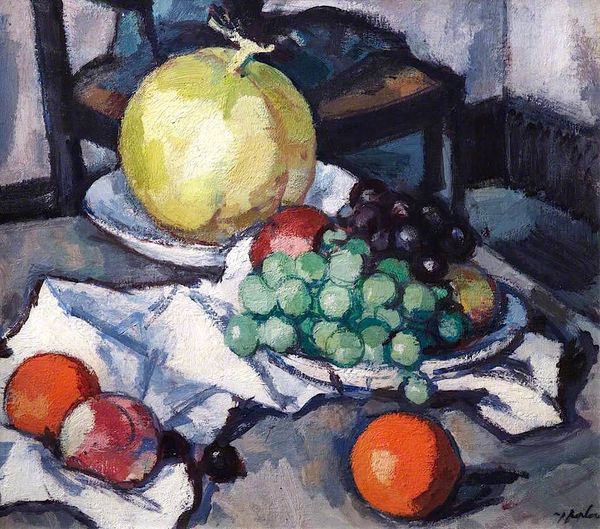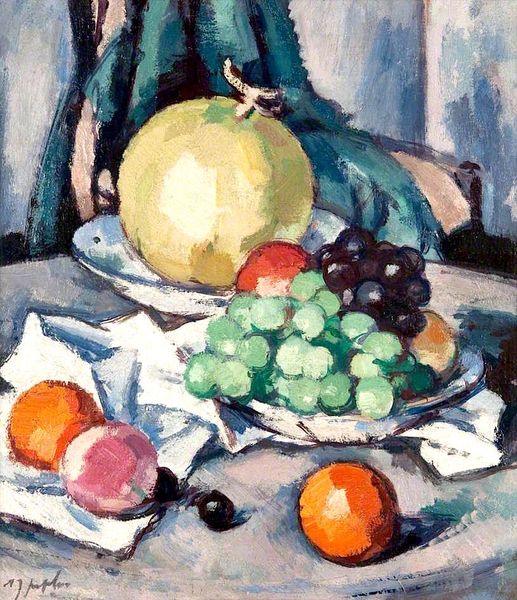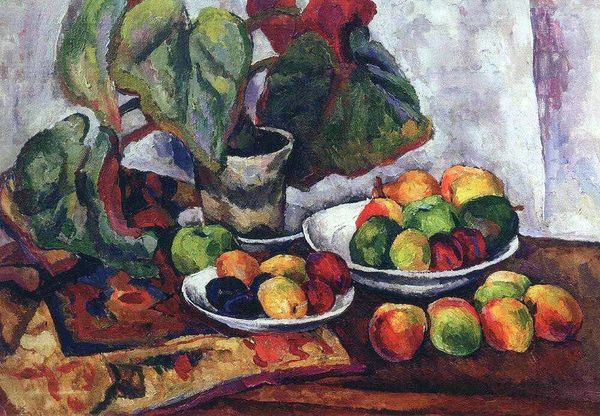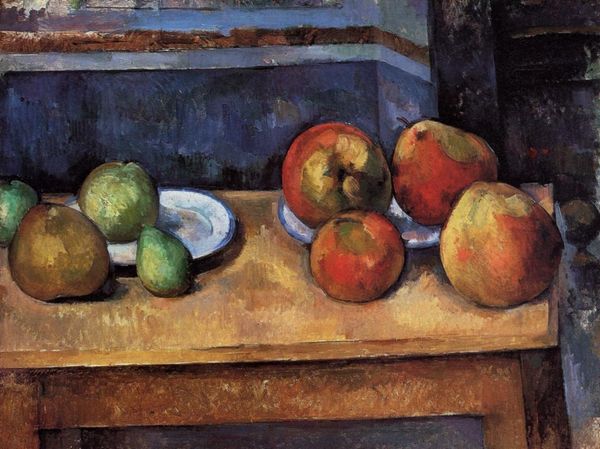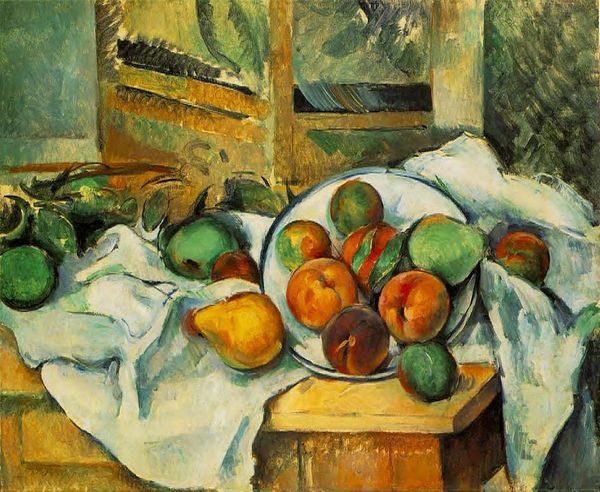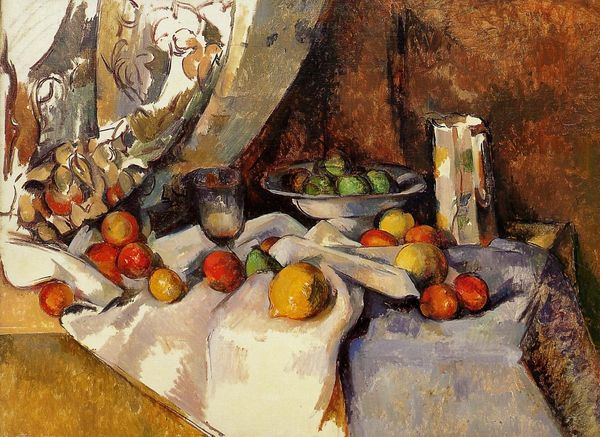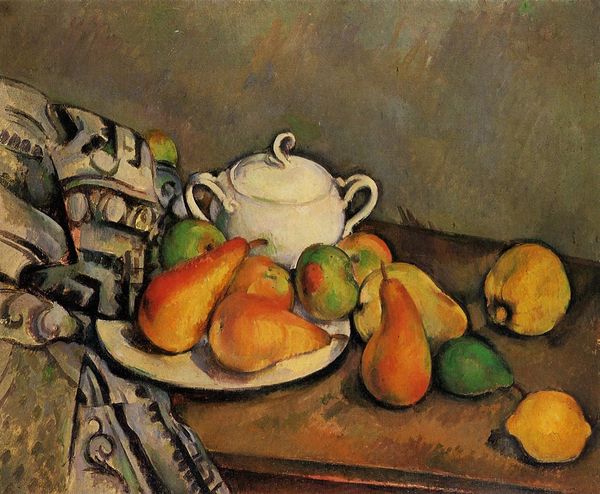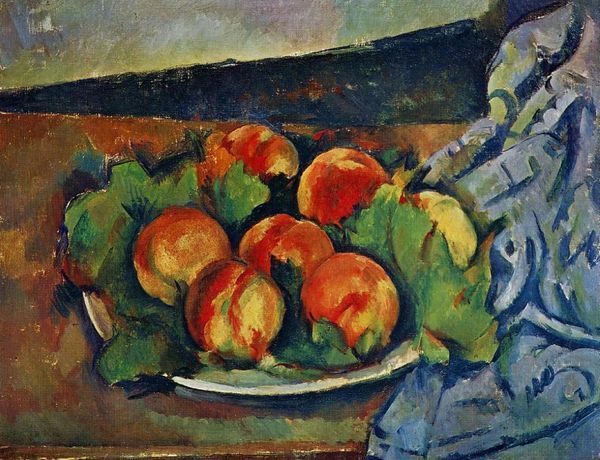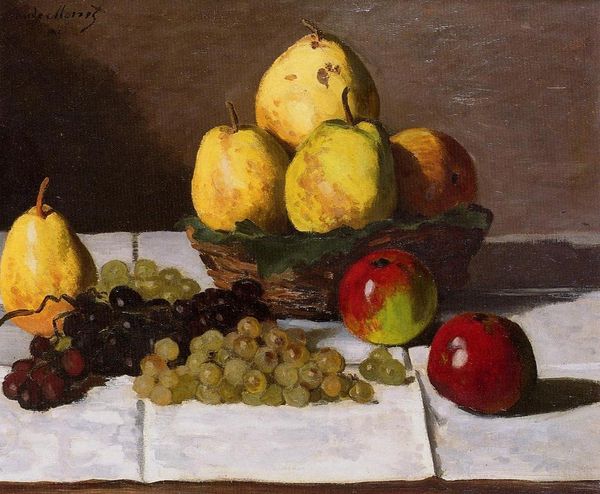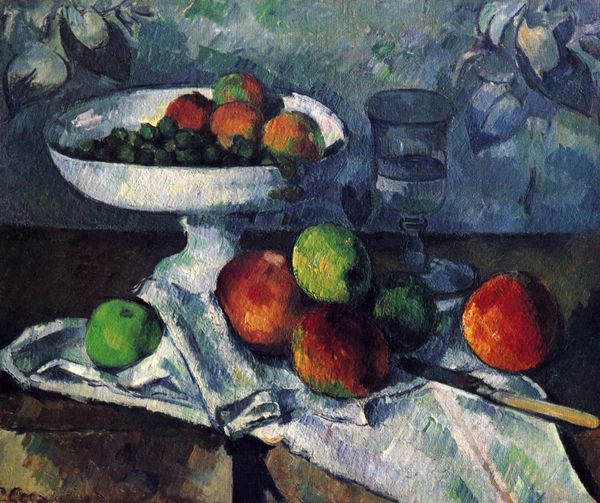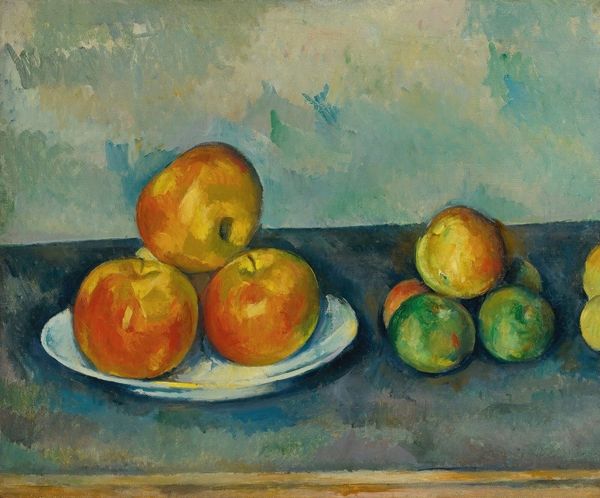
painting, oil-paint
#
painting
#
impressionism
#
oil-paint
#
oil painting
#
fruit
#
post-impressionism
#
modernism
Copyright: Public domain
Curator: Look at how Paul Cézanne presents such ordinary items in "Apples, Pears and Grapes," painted around 1880. Editor: You know, seeing that blue plate overflowing, it's so simple, yet it feels almost…monumental. It has weight, even though it's just fruit! Curator: Right, Cézanne is not just rendering fruit, is he? The symbolic density of the image relies on its humble components. Throughout Western art, fruit still lifes traditionally hinted at the transience of life, the ever-present decay, even in abundance. How does that relate, you think, to the plate, to that cool color supporting those luscious tones? Editor: That deep blue against the yellows and oranges! It sings, almost aggressively. It feels very different from traditional still lifes which go for atmosphere more than boldness. Here, Cézanne kind of challenges us, I think. Look at the leaves behind—barely suggested, yet echoing the fruit shapes. Are they watching the fruit or are they there as formal accents? Curator: Precisely. And the arrangement. The fruit, so clearly arranged, feels on the cusp of tumbling forward, defying our expectation of classical balance. One of the common interpretations of still life revolves around this dialectic: humans against nature, or rather, control against natural processes. In a way, that's a foundational cultural symbol with repercussions even today. Do you sense it at all here? Editor: Absolutely. There’s a tension. He's using simple shapes, common objects, but he pushes their volume and their perspective to challenge traditional notions of space and form. The plate is a plane that somehow manages to stay up, but not easily! He teases with gravity—it's so strange but appealing. Curator: What you are noting are elements which really made Cézanne a crucial turning point toward the modern. The private collection this piece resides in is lucky. There are levels to discover—a common thing for common themes, and one of the more revolutionary. Editor: Yes! And who would have thought that a humble still life could pack so much subversive energy? Makes me want to go look at some fruit, with entirely different eyes!
Comments
No comments
Be the first to comment and join the conversation on the ultimate creative platform.
